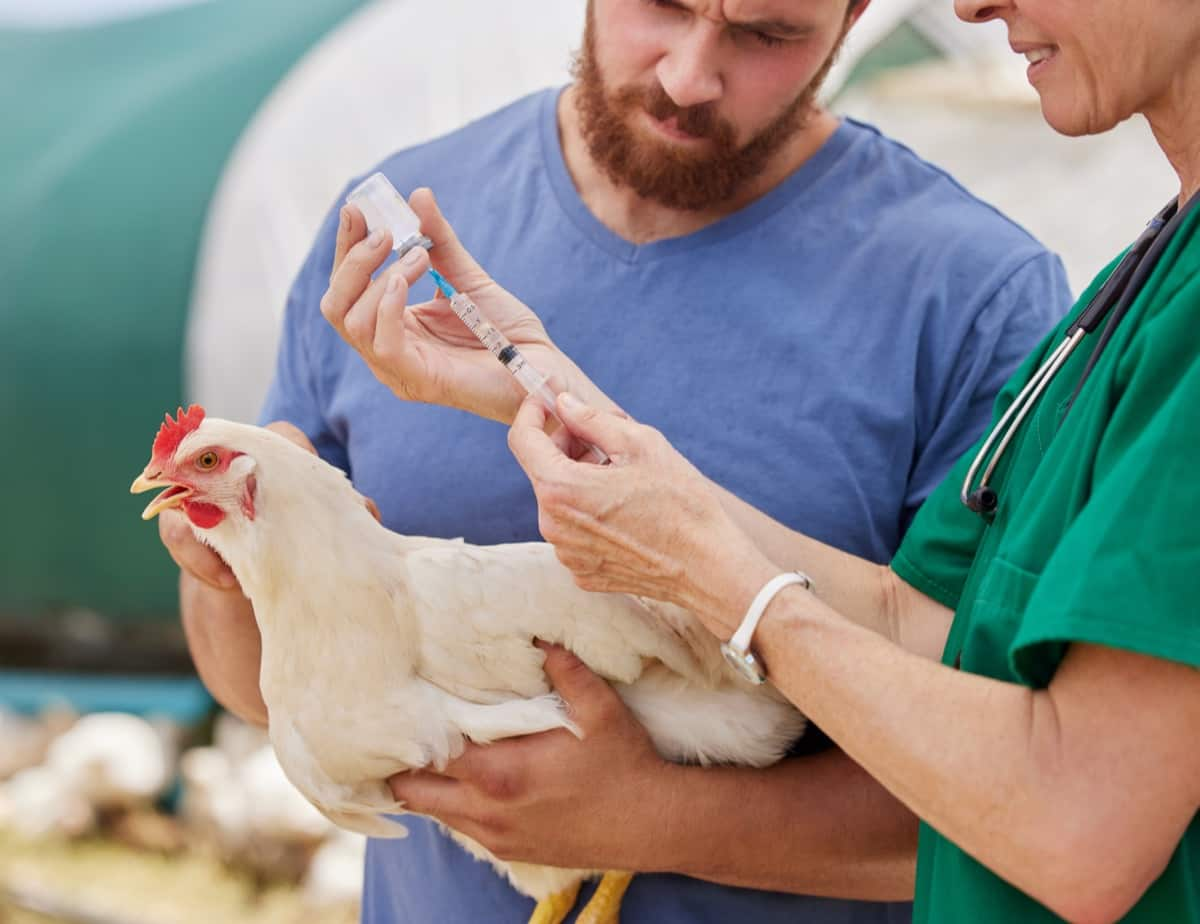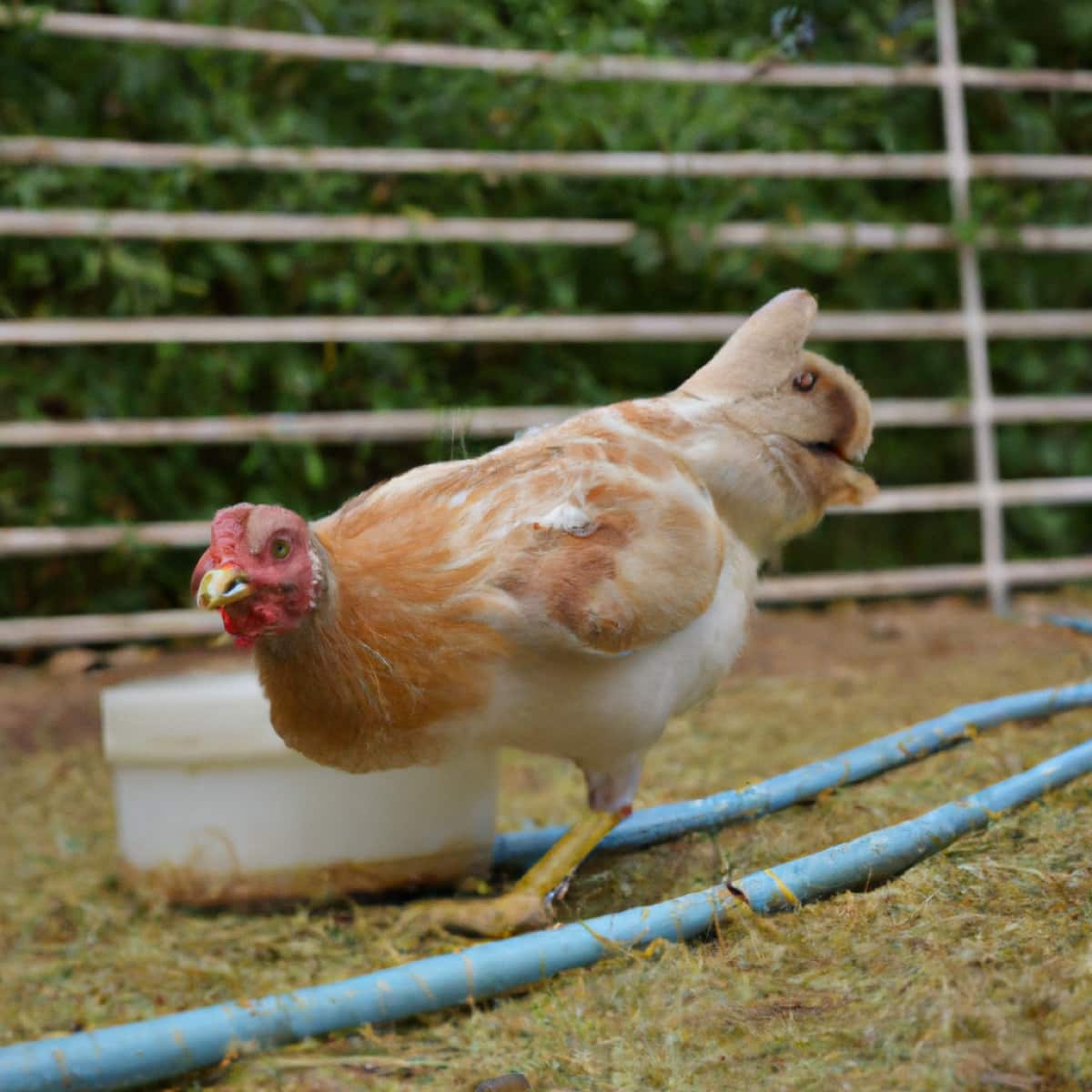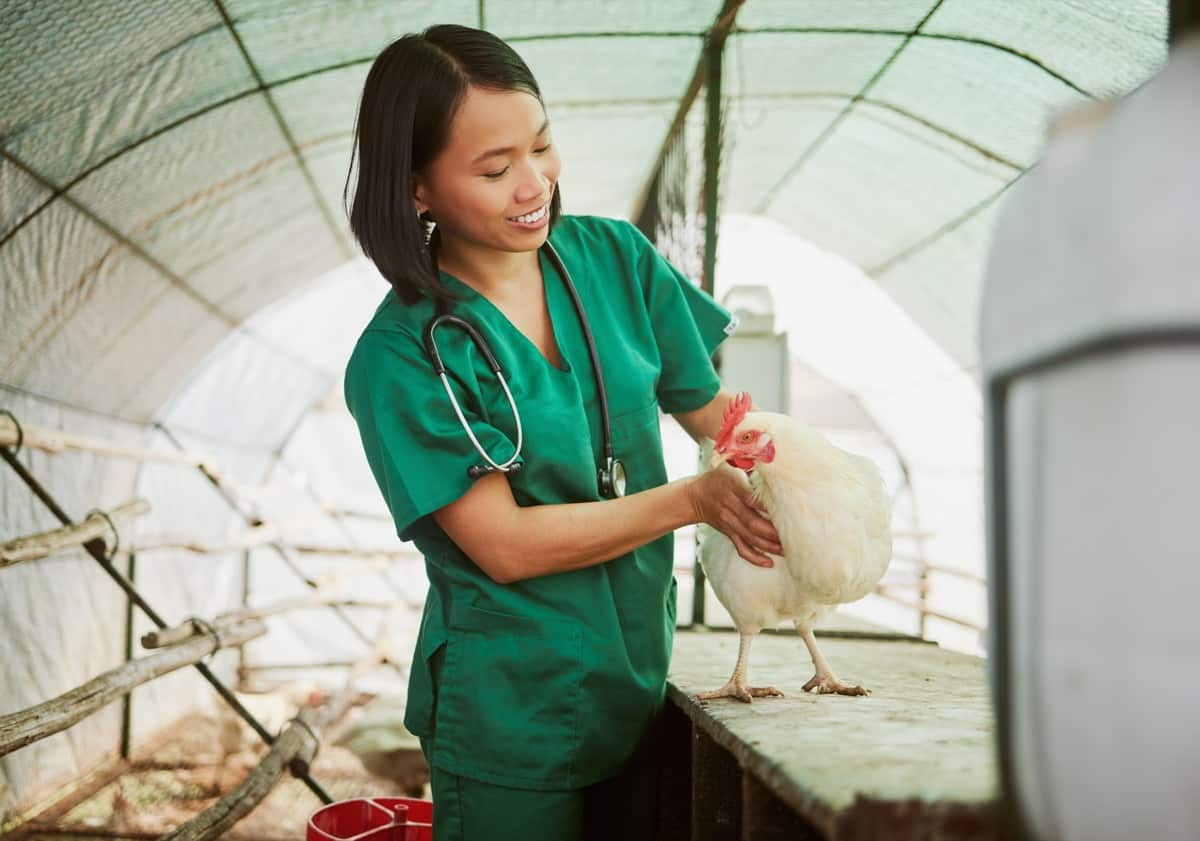Fowl cholera, also known as avian cholera, avian pasteurellosis, or avian hemorrhagic septicemia, is a bacterial disease that affects various bird species, including poultry, turkeys, ducks, geese, raptors, and canaries. It is caused by the bacterium Pasteurella multocida. It is a zoonosis that can be transmitted from animals to humans. Adult birds and old chickens are more susceptible to the disease, which is more common in cockerels than hens.

Fowl Cholera Disease Management in Chicken
Occurrence of Fowl Cholera Disease
Fowl cholera outbreaks typically occur in cold and wet weather, particularly in late summer, fall, and winter. The disease is often introduced to a flock through the presence of rodents in breeding houses that spread the bacterium from carcasses of dead birds that may have been improperly disposed of, including those from neighboring backyards.
Once introduced, the disease can persist in the flock until culling, and chronic carriers may cause re-emergence of the disease in susceptible birds. In wild birds, wetlands are the most common sites associated with the disease, acting as short-term reservoirs that record large amounts of the bacterium in the soil and water during outbreaks.
The disease can present in two forms, acute and chronic, with acute infections resulting in death within 6-12 hours of contracting the bacterium. Waterfowl are most commonly affected by fowl cholera due to their association with dense aggregations. Still, scavengers and other water birds can also be affected during large, multi-species outbreaks.
Disease cycle of Fowl Cholera
The disease cycle of fowl cholera involves the introduction of the Pasteurella multocida bacterium to a susceptible bird population through inhalation, ingestion, or contact with contaminated materials. The bacteria then colonize the respiratory or gastrointestinal tract, causing clinical signs such as respiratory distress, nasal discharge, and diarrhea. The bacteria may also invade the bloodstream, leading to sepsis and death.
Infected birds shed the bacteria through nasal exudate, feces, and contaminated materials, which can infect other susceptible birds or contaminate the environment. Carriers, including scavengers, predators, and chronically infected birds, can perpetuate the infection cycle by shedding the bacteria into the environment. Contaminated water and soil can also harbor the bacteria for long periods, leading to the re-infection of susceptible birds.
Symptoms of Fowl Cholera Disease
- Symptoms of fowl cholera can include dejection, ruffled feathers, loss of appetite, diarrhea, coughing, nasal, ocular, and oral discharge, swollen and cyanotic wattles and face, sudden death, swollen joints, and lameness.
- In chronic cases, localized infections are more common, often occurring in the respiratory tract, sinuses, pneumatics bones, hock joints, sternal bursa, foot pads, peritoneal cavity, and oviducts.
- In acute cases, typical post-mortem lesions include petechiae in the epicardial fatty tissue, necrotic foci on the liver, and general hyperemia.
Impact of Fowl Cholera on Chicken
- High mortality rates early stages of the disease
- Chronic infection can lead to continued mortality and decreased production.
- A high percentage of the flock can become carriers while appearing normal.
- Losses usually occur in birds over 16 weeks of age.
- Economic losses due to decreased production and increased cost of treatment
- The potential spread of the disease to other flocks or neighboring farms
- Increased risk of zoonotic transmission to humans handling infected birds.
In case you missed it: Anthrax Disease Management in Cattle: Symptoms, Treatment, Prevention and Management of Disease

Diagnosis of Fowl Cholera in Chicken
The presumptive diagnosis of fowl cholera can be made based on necropsy revealed petechial haemorrhages in the epicardial adipose tissue and myocardium, as well as focal necrosis in the liver, the sudden death of large numbers of affected birds. Identifying Pasteurella multocida from fresh heart blood is used to make a definitive diagnosis.
Treatment and Control of Fowl Cholera Disease
- Treatment of fowl cholera includes intramuscular injections of long-acting tetracycline and the same antibiotic in drinking water. Chlortetracycline, oxytetracycline, and sulfaquinoxaline in feed or water have effectively treated fowl cholera outbreaks in waterfowl when individual treatment is applicable.
- Controlling disease transmission is critical in the event of an outbreak. To avoid contamination, dead birds should be collected and burned. Contaminated pools can be drained, cultivated, or flushed with pumped or flood waters.
- It is also advised to discourage the artificial preservation of open water after the hunting season has ended, as this can concentrate and hold birds north of their normal wintering areas.
- In severe outbreaks, efforts may be made to limit gull scavenging activities, as they can act as fowl cholera transmitters due to disease resistance.
The following are different treatments that can be given to chickens to control fowl cholera:
| Supportive care | Tylosin |
| Probiotics | Sulfamethazine |
| Oxytetracycline | Streptomycin |
| Norfloxacin | Penicillin |
Biosecurity Measures to Prevent Fowl Cholera Disease in Chickens
- Control access: Limit access to your poultry farm and control entry of people, vehicles, and equipment to prevent disease introduction.
- Sanitation: Keep your poultry farm clean and disinfected, and follow proper manure management practices. Cleaning and disinfecting equipment and housing can help prevent the spread of disease.
- Rodent control: Implement a rodent control program to prevent rodents from entering the farm and contaminating feed and water.
- Quarantine: Quarantine new birds and sick birds from the rest of the flock until they have been properly diagnosed and treated.
- Purchase from reputable sources: Always buy healthy poultry from reputable, disease-free sources. Avoid purchasing from unknown sources or auctions where disease risk may be higher.
- Keep domestic animals away: Keep domestic animals, such as dogs and cats, away from the flock to prevent disease transmission.
In case you missed it: Hemorrhagic Septicemia Disease Management in Cattle: Symptoms, Treatment, Prevention and Management of Disease

Conclusion
Fowl cholera is a serious bacterial disease that can significantly impact chicken health and productivity. While various treatments are available, including supportive care and antibiotics, prevention through good biosecurity practices is critical. Measures such as maintaining clean housing and equipment, controlling rodent populations, and purchasing healthy poultry from reputable sources can go a long way in preventing the disease from spreading.
Early detection and prompt treatment of infected birds can also help to minimize losses. By implementing these strategies, poultry farmers can better protect their flocks and ensure the continued production of healthy birds.
- Types of Fungicides Used in Agriculture
- Common Issues in the Fruit Development Stage of Pomegranate Farming
- Fruit Development Issues in Papaya: Easy Solutions and Treatment
- Soil-Borne Diseases and How to Protect Your Plants
- Practices to Prevent Disease Spread in the Garden
- From Wilted to Thriving: How to Treat Root Rot Naturally in Houseplants
- Natural Remedies to Cure Brown Spots on Fig Tree Leaves
- Natural Solutions for Poinsettia Problems: 100% Effective Remedies
- How to Control Calla Lily Problems: Natural Remedies for Leaf and Flower Problems